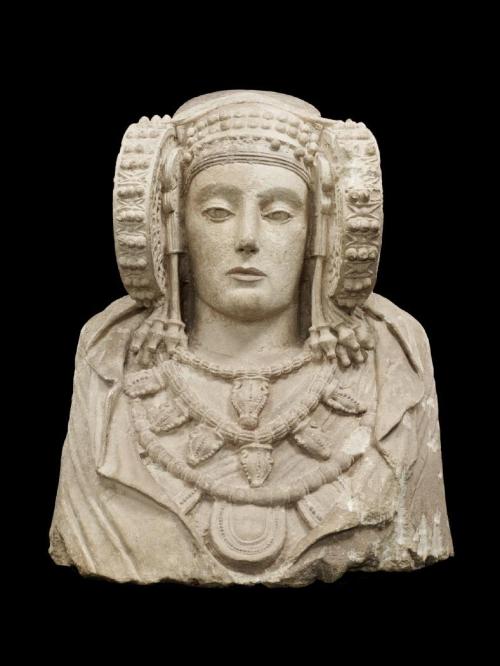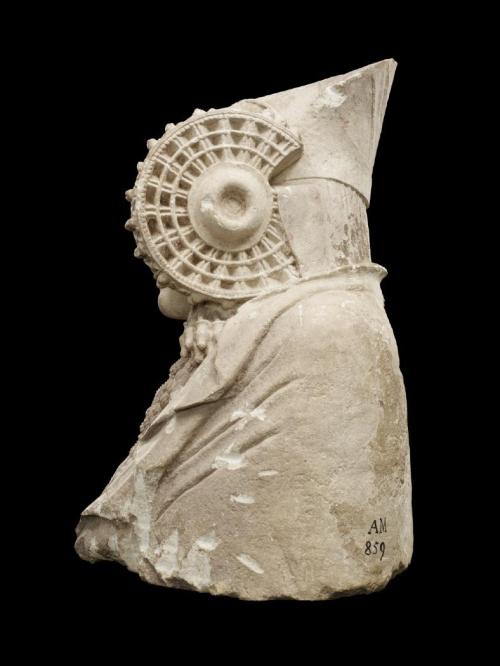[image descriptions:1. the Lady of Elche statue, looking at it head on. It is a two foot tall limest
[image descriptions:1. the Lady of Elche statue, looking at it head on. It is a two foot tall limestone bust of a woman with a neutral expression. It is mostly pale tan, with faint hints of red paint on her lips. Her hair is entirely hidden by a headdress made up of a pointed tiara, covered by a veil, with a strap connecting it to two ‘rodetes’, large wheel shaped decorations, on either side of her face, and a diadem on her forehead. A number of ribbons with beads on the end hang between the rodetes and her face on both sides. She is dressed in a robe, which opens at the front, revealing three necklaces decorated with what looks like mini-amphora jars. The bottom of the statue is rough, as if it broke off of something.2. a three quarter view of the same statue, showing the top of the headdress and the inside of the rodetes in more detail.3. a side view of the same statue, showing the ‘spokes’ of the rodetes and how the pointed tiara extends above the rest of the statue.4. the back of the statue, showing a hole in the middle of the back.]The Lady of Elche is the best known example of pre-Roman Iberian sculpture. The statue contains Punic and Hellenistic influences, but is in many ways distinctly Iberian, particularly in the headdress, which is seen in other contemporary Iberian statues of women. The statue would originally have been brightly painted in blues, reds, and yellows, and further decorated with gold sheet, which is almost entirely missing now. It is likely only part of a larger sculpture, but it is still in debate if it was a standing or seated statue.The statue was found in the archaeological site La Alcudia, near Elche, a town in the southeast of modern Spain. It is dated to the 4th century BCE, when the Carthaginians still controlled (more or less) the region. Greek colonists had occupied the region before the Carthaginians.The subject and function of this statue has been debated since it was uncovered in 1897. It has been described as despicting a goddess (possibly the Punic goddess, Tanit), a priestess, or an aristocratic woman. The last suggestion seems to most likely, given recent research investigating particles from within the hole in the statue’s back, which proved that it had contained human bone ash. This indicates that the statue was likely a funerary urn, which would have contained the ashes of the woman depicted.Much of this information came from the Museo Arqueológico Nacional, which currently has the statue. It was previously held by the Louvre, which repatriated it in 1941. -- source link
#ancient iberia#tagamemnon#ancient history



